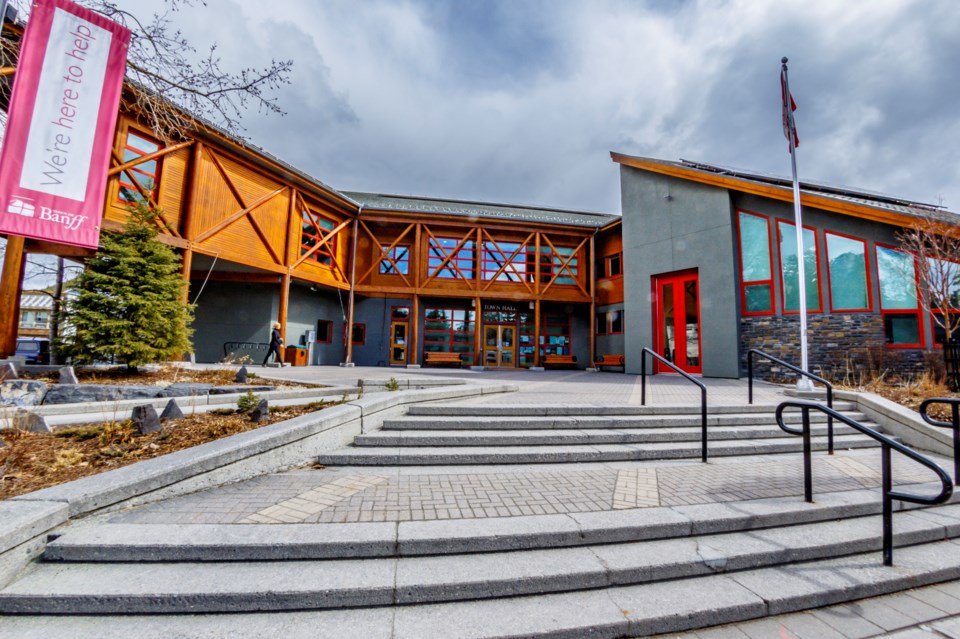BANFF – Home-based businesses in the Banff townsite will be capped under new Parks Canada direction in the long-awaited management plan for Banff National Park.
Commercial development has long been capped and limited to commercial districts, and bed and breakfast homes are already subject to quotas, but Parks Canada sees a limit on the number of home occupation businesses as an evolution of restricting commercialization and protecting much needed residential housing in the national park townsite.
The new management plan, which has been tabled in federal parliament and was released on Aug. 22, directs Banff town council to establish a maximum number of home occupation businesses that will be permitted in residential land use districts, including B&Bs. However, it’s up to council to decide what that limit is.
“There’s a cap on commercial space in the townsite and we’re trying to take a consistent approach across the entire townsite,” said Sal Rasheed, superintendent of Banff National Park.
“We want to have line of sight and make sure that things don’t get too out of control in these home-based businesses.”
In June, Parks Canada wanted clarification on why a proposal before the Municipal Planning Commission (MPC) for a home-based massage therapy studio was not better suited within existing commercial space in the commercial districts.
At that June 8 meeting, MPC refused the application for a small massage studio in an Otter Street home, determining the application met the definition of professional, financial, health and office services, which are confined to Banff’s commercial districts.
“We’ve had recent examples, as you’ve reported on, where unless there’s some sort of checks and balances in the system, things will get out of control,” said Rasheed.
“I will say establishing a limit on home occupations is a responsibility of the town council and not Parks Canada.”
At the beginning of the year, Banff had about 85 home occupation businesses. Home-based businesses do not provide anyone with a need-to-reside, nor are they allowed to alter the residential character of the neighbourhood, for example with signage, traffic or noise.
Banff Mayor Corrie DiManno said the Town will create limits if that’s what Parks Canada is directing; however, she doesn’t believe the number of home occupations in residential areas has been an issue to date.
“They’ve identified this, so we will look into it,” she said.
“Council will likely want to get some community feedback before setting a limit, but we will ensure that we meet that objective."
The 2022 management plan also states that where commercial use, such as a B&B inn, eating and drinking establishment or service station is the principal use of a site in a residential land use district, any increases in the gross floor area are prohibited.
Relocation, assignment or transfer of these commercial uses to another parcel not located in a commercial land use district is also banned. The aim is to retain residential space and neighbourhood character for eligible residents to live.
In addition, Parks directs the net amount of land designated as Public Parkland (PP) and Environmental Protection (PE) does not decrease from what existed as of December 31, 2021, and by not allowing further commercial development in these areas.
Land uses within the Public Service (PS ) district are limited to non-commercial uses of an institutional, government, educational or community service nature required to meet the needs of residents.
Commercial uses may not occur in this area except as they may be incidental or supportive of the primary institutional, government, educational or community service use of the building or site. Non-conforming land uses in this district that existed as of June 1998 are grandfathered.
The new management plan gives no more concrete details on Parks Canada’s plans to complete the assembly of lands on the east side of the 200 block of Banff Avenue first announced by the federal government in 1998.
The plan states the lands will be used for the development of facilities that enhance the connection of visitors in downtown Banff to the rest of the national park, and that foster understanding of the ecology and human history of the area and support for conservation.
“In the near term, Parks Canada and the Town of Banff work together to foster a more dynamic and integrated open space within the downtown core,” states the new management plan.
Now that the 2022 management plan has been approved and tabled in parliament, the Town of Banff has five years in which to create a community plan.




